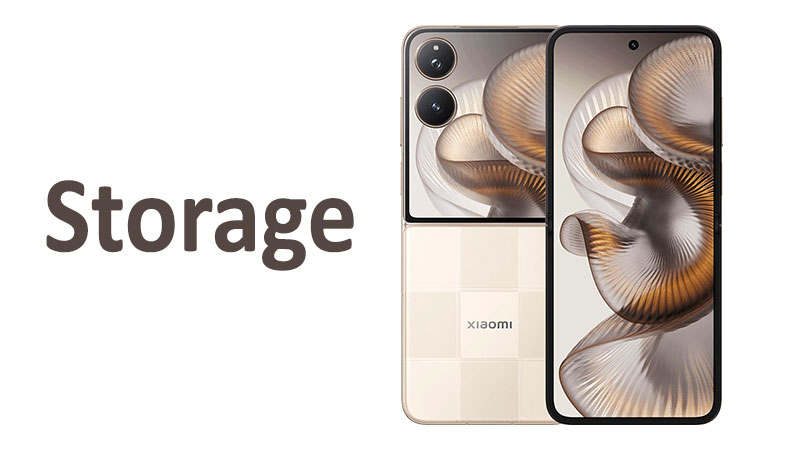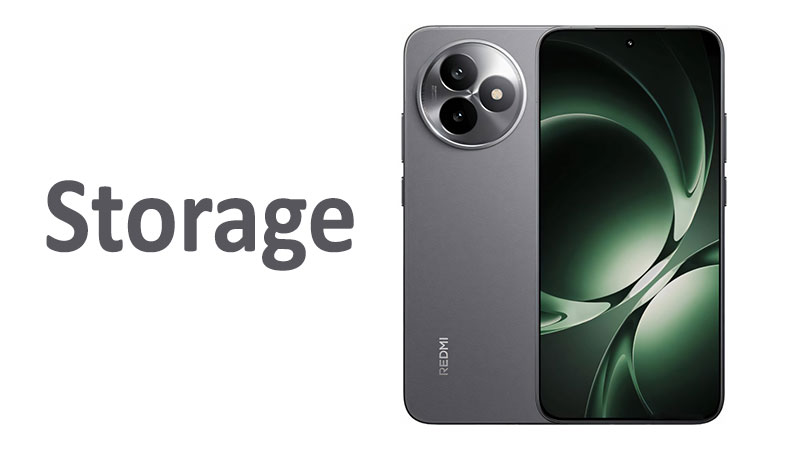An important aspect of any modern smartphone is its internal storage. This is where you keep your apps, photos, videos, and files. Choosing the right amount of storage is a crucial decision. It directly impacts your daily experience with the device. This article explores everything you need to know about Google Pixel 10 storage. We cover its capacity, its type, and offer a comprehensive buyer’s guide.
Google Pixel 10 Storage Options: Capacity and Types
The Google Pixel 10 comes with two main storage options. You can choose between 128GB and 256GB. This provides some flexibility for different users. The base model offers 128GB of storage. This is suitable for general use. The 256GB option is for those who need more space. It is a significant step up.
The type of storage technology is also very important. It determines the speed of the phone. This includes app loading times and file transfers. The Google Pixel 10 uses different types of storage depending on the capacity. The 128GB model features UFS 3.1 storage. The 256GB model, however, is equipped with a faster UFS 4.0 storage. This is a key difference between the two versions.
UFS 3.1 vs. UFS 4.0: A Detailed Comparison
Understanding the difference between UFS 3.1 and UFS 4.0 is essential. It helps you make an informed decision. UFS stands for Universal Flash Storage. It is a standard for internal storage in smartphones. UFS 4.0 is the latest iteration. It brings significant improvements over UFS 3.1.
UFS 4.0 offers twice the data transfer speed of UFS 3.1. It provides up to 4,200 MB/s read speeds and 2,800 MB/s write speeds. In contrast, UFS 3.1 has max read speeds of about 2,100 MB/s. Its write speeds are up to 1,200 MB/s. This means that with UFS 4.0, apps load faster. Large files transfer in less time. Recording high-resolution video is also smoother.
UFS 4.0 is also more power-efficient. It is about 46% more efficient than its predecessor. This helps extend the phone’s battery life. It’s a noticeable upgrade. The faster speed and better efficiency make the 256GB model more appealing.
Google Pixel 10 Storage: Key Pros and Cons
Choosing your storage capacity involves weighing several factors. Here is a breakdown of the pros and cons for each Google Pixel 10 storage option.
Pros of the 128GB Google Pixel 10
- Lower Price: The 128GB model is the most affordable. It has a lower upfront cost. This makes the Pixel 10 more accessible to more people.
- Sufficient for many users: 128GB is ample space for average users. This includes people who mostly use social media and stream content. It also suits those who store photos and a few videos.
- Still fast: While slower than UFS 4.0, UFS 3.1 is still very fast. It offers a smooth and responsive experience for everyday tasks.
Cons of the 128GB Google Pixel 10
- Slower Storage Technology: The UFS 3.1 storage is a step down from UFS 4.0. It results in slower app loading and data transfers.
- Limited Space: 128GB can fill up quickly. This is especially true for users who record a lot of 4K videos or download many large apps and games.
- No MicroSD Card Slot: Like previous models, the Pixel 10 does not have a card slot. You cannot expand the storage. This means you are stuck with your initial choice.
Pros of the 256GB Google Pixel 10
- Faster Performance: The UFS 4.0 storage provides a significant speed boost. It improves overall system responsiveness. It makes everything feel snappier.
- Future-Proofing: 256GB offers a good amount of headroom. It ensures the phone remains useful for many years. You will have plenty of space for new apps and data.
- Enhanced Experience: It is better for power users. This includes mobile gamers and content creators. They benefit from the faster storage. It handles large files with ease.
Cons of the 256GB Google Pixel 10
- Higher Cost: The 256GB model is more expensive. This may be a deterrent for budget-conscious buyers.
- Potentially Unnecessary: Some users may not need this much space. They might be better off with the 128GB version. The extra cost might not be worth it for them.
A Buyer’s Guide: Which Google Pixel 10 is Right for You?
Choosing between the 128GB and 256GB Google Pixel 10 models is a personal decision. Consider your specific usage habits. Your long-term needs are also important.
Choose the 128GB Model If…
- You are on a tight budget.
- You mainly use your phone for basic tasks. This includes browsing, social media, and communication.
- You rely heavily on cloud storage services. Services like Google Photos, Dropbox, or iCloud can save space.
- You do not download many large apps or games.
- You are not planning to record many high-resolution videos.
Choose the 256GB Model If…
- You are a power user.
- You take a lot of photos and videos. This is especially true for 4K video.
- You frequently download large files or high-quality movies.
- You are a mobile gamer. Many modern games are very large.
- You plan to keep your Google Pixel 10 for several years. The extra space will be valuable over time.
- You want the fastest possible performance. The UFS 4.0 storage is a major selling point.
The Google Pixel 10 storage is not just about capacity. The type of storage technology is also a key factor. This is a new detail for the Pixel series. It is a very important consideration for buyers.
Google Pixel 10 Storage: Competitor Comparison
The Google Pixel 10 competes with other flagship smartphones. It is useful to compare its storage options to those of its rivals.
- Google Pixel 10 vs. iPhone 17: Apple‘s iPhone 17 also starts with 256GB of internal storage. However, the iPhone often uses NVMe storage. NVMe is a high-speed storage protocol. It offers excellent performance. The Pixel 10’s UFS 4.0 is a strong competitor to this technology.
- Google Pixel 10 vs. Samsung Galaxy S25: Samsung’s Galaxy S25 also uses UFS 4.0 storage. It offers a similar high-speed experience. Samsung often provides a broader range of storage options. This can include a 512GB or 1TB model. The Pixel 10’s storage options are more limited.
The Importance of Google Pixel 10 Storage in the Long Term
A phone’s storage performance can degrade over time. This is a natural process for all flash memory. The faster UFS 4.0 storage in the 256GB Google Pixel 10 helps with this. It offers better endurance. This means it can withstand more write and erase cycles. This is particularly important for heavy users.
Over a period of two or three years, a phone can accumulate a lot of data. The initial storage choice becomes very important. A 128GB model may start to feel cramped. This can lead to the need for constant file management. The 256GB model provides peace of mind. You won’t have to worry about space. This contributes to a better user experience over the life of the phone.
The difference in speed also becomes more noticeable. As the phone ages, data fragmentation can occur. The faster UFS 4.0 can handle this more efficiently. It helps the phone maintain its speed. This ensures your Google Pixel 10 stays fast and responsive for longer.
Conclusion: Making the Right Choice
The Google Pixel 10 offers a simple but impactful choice in storage. You can opt for 128GB or 256GB. The 128GB model is a great value. It is perfect for the average user. Its UFS 3.1 storage is more than sufficient for most daily tasks.
However, the 256GB model is the clear winner for anyone seeking top performance. With UFS 4.0 storage, it offers a major upgrade, delivering faster speeds and better power efficiency. This makes it the ideal choice for power users, gamers, and content creators. For those who want their phone to last, it’s also the best option.
Consider your personal needs carefully. The storage you choose today will affect your experience tomorrow. Do not underestimate the importance of this decision.
FAQ
Can I add more storage to the Google Pixel 10 later?
No. The Google Pixel 10 does not have a microSD card slot. Its internal storage cannot be expanded. This makes your initial choice of storage capacity very important.
Is 128GB enough for the average person?
For most people, yes. 128GB is enough for basic use. It is sufficient for apps, photos, and some videos. However, if you download a lot of large files, you may run out of space quickly.
Does the storage type affect the phone’s battery life?
Yes. The UFS 4.0 storage in the 256GB model is more power-efficient. It helps improve the phone’s overall battery life. This is a subtle but important benefit.
What is the difference between UFS and NVMe storage?
UFS (Universal Flash Storage) and NVMe (Non-Volatile Memory Express) are both high-speed storage standards. UFS is common in mobile devices. NVMe is more common in high-end computers and some flagship phones. Both offer excellent performance.
Why do different Pixel 10 models have different storage speeds?
Google likely made this decision to differentiate the models. The 256GB model is a premium offering. Using a faster UFS 4.0 chip justifies its higher price. It also provides a better experience for those willing to pay more.


